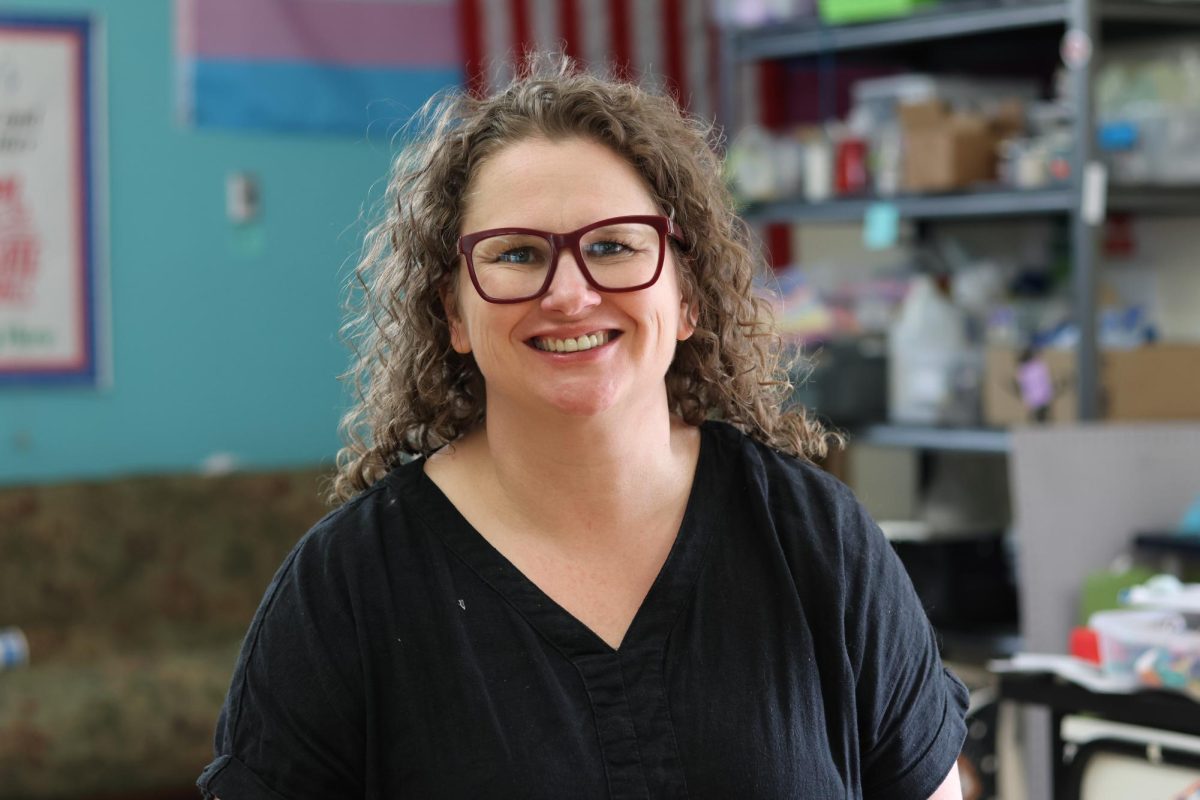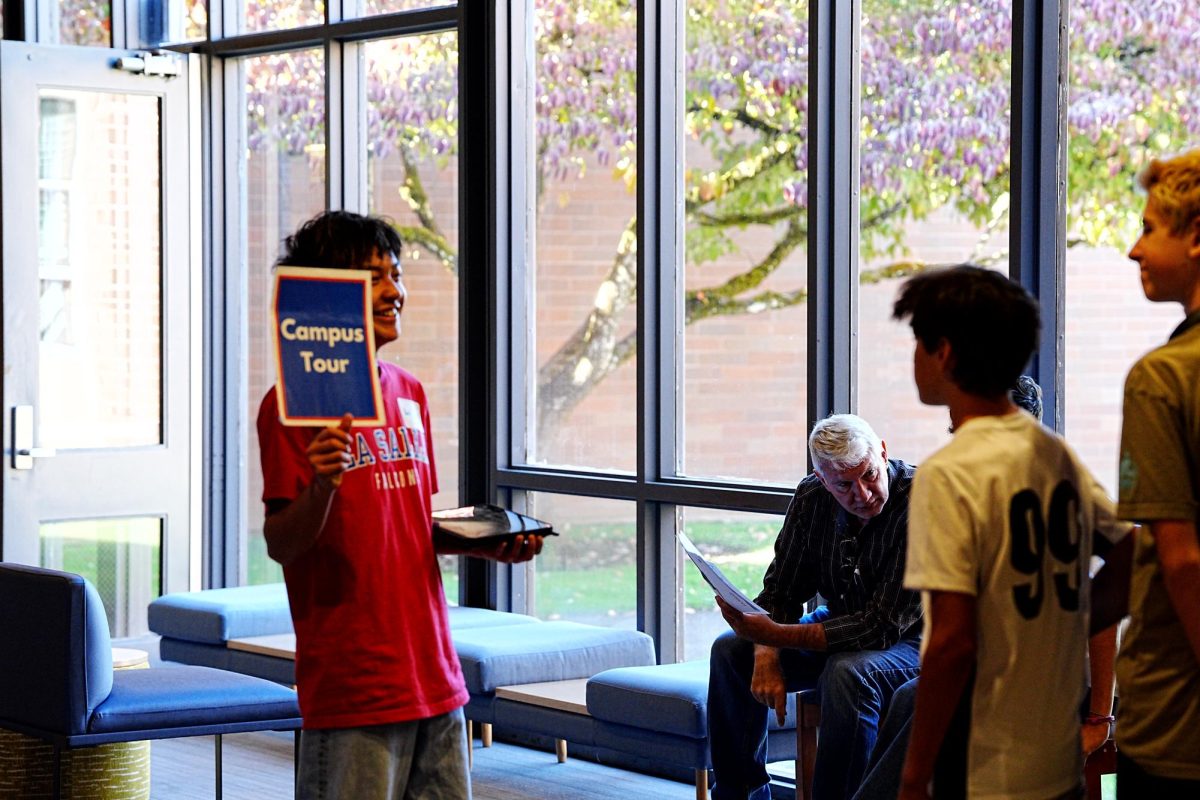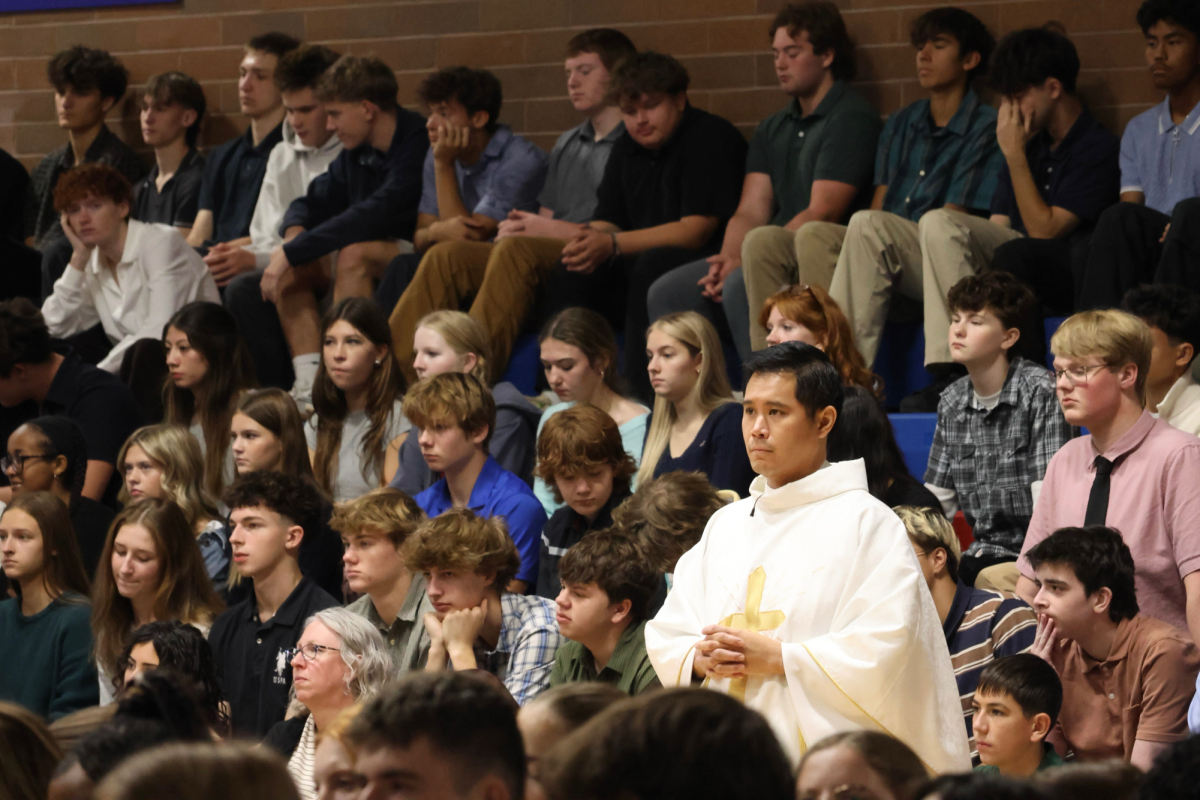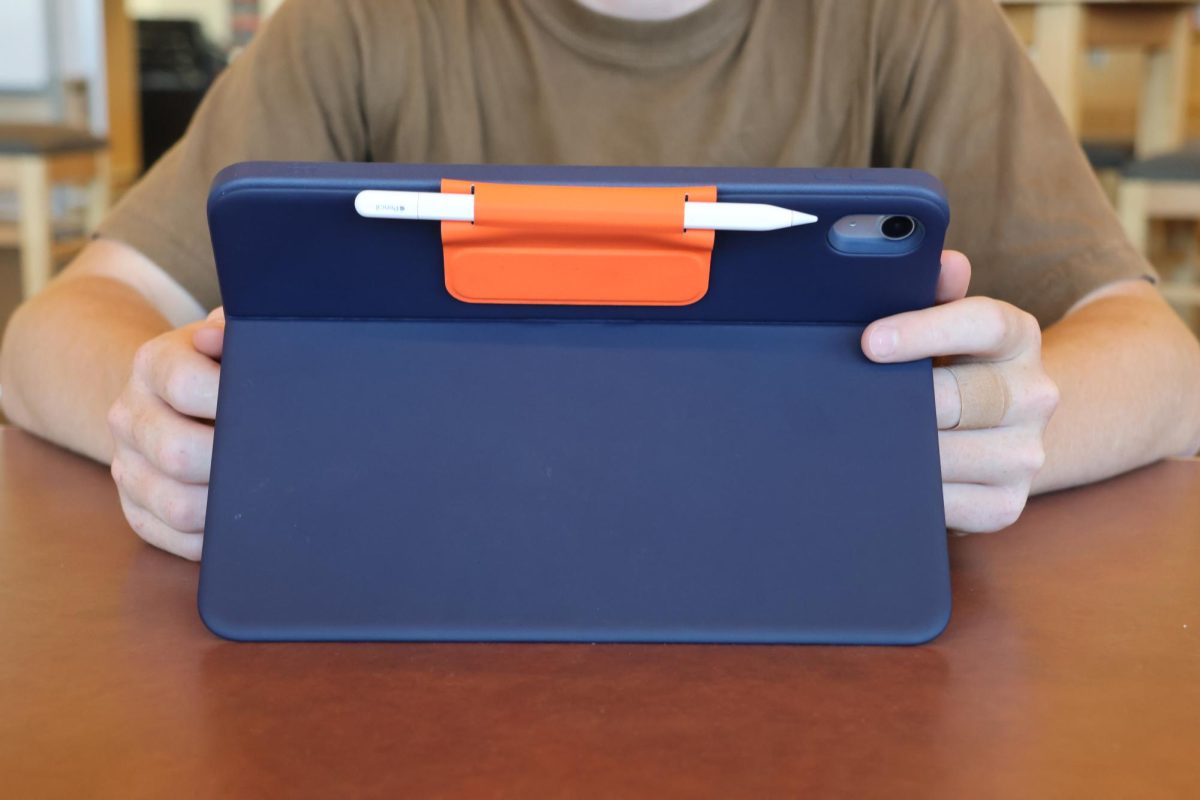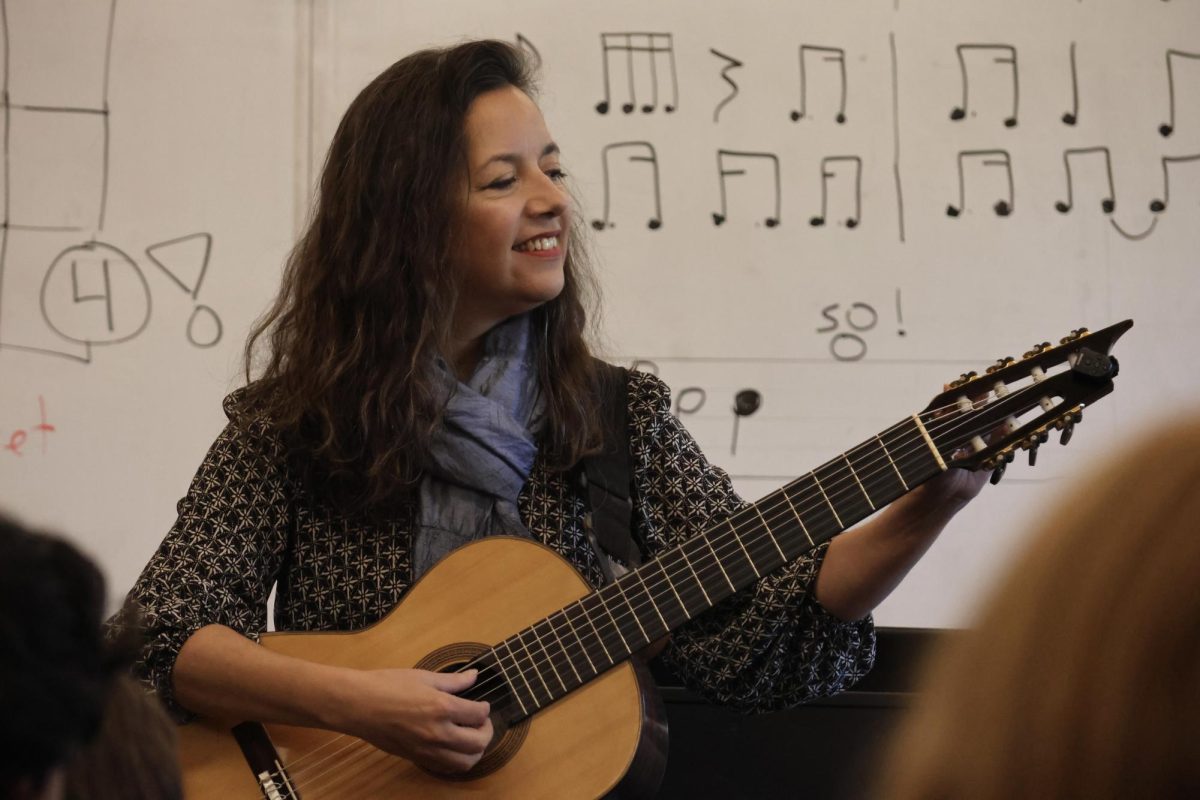Although she is outgoing and extroverted now, throughout her childhood Ms. Carie Coleman was pretty timid.
“You might find this hard to believe, but I was super shy,” she said.
It was the important role of community in her high school years that allowed her personality to blossom.
Now, Ms. Coleman, Director of STEAM (science, technology, engineering, art, math), strives to foster a similarly accepting and supportive environment in the Innovation and Design Center (IDC), also known as the Makerspace, that allows for students to explore their creativity.
Growing up in the small town of Pe Ell, Washington, Ms. Coleman attended a K-12 school where she was a dedicated student, focused on earning good grades and playing the sports she loved — softball and basketball. Her commitment to school came from a determined effort to earn scholarships and become a first generation college graduate.
Ms. Coleman graduated at the top of her high school class of 17 students. Because she valued having a personal relationship with her professors, she attended the University of Portland (UP), a local private school with a small student population. Majoring in biology, Ms. Coleman started her freshman year of college with around 150 other students, becoming one of roughly 25 who graduated with a biology degree.
During her time in college, Ms. Coleman was very involved in the community. After living in the dorms, she became a resident assistant (RA) her senior year, so that the underclassmen “felt supported and that they had someone who had their back.”
After college, Ms. Coleman considered going to medical school or becoming an occupational therapist — inspired by an occupational therapist that helped her sister with physical disabilities feel loved and supported. However, she instead decided to do a volunteer year with Holy Cross Associates, a Catholic community of brothers and priests who serve at the University of Portland.
Through the Holy Cross Associates, Ms. Coleman was assigned to work at a daycare in Wilkes-Barre, Pennsylvania, where she discovered her love of planning activities by working with preschoolers from the ages three to five years old.
“They were just so hilarious,” she said. “Their creativity, their sense of wonder, was just mind blowing.” From this experience, Ms. Coleman also discovered her passion for figuring out how to pair creativity with science.
She returned back to UP to work in residence life before accepting an offer for a volunteer service learning project teaching anatomy at Roosevelt High School. After that, she worked for two years under the Pacific Alliance for Catholic Education, where she was then assigned to teach at La Salle Catholic College Preparatory without any prior knowledge of the school.
The first thing she noticed were the Lasallian core principle banners displayed in the main hallway.
“When I saw those banners, every single one of those spoke to everything I wanted in a job,” she said.
They personally resonated with her values because “up until that point in my life, that is everything I’ve wanted to do.” Ms. Coleman’s goal is to “help make the world a better place through social justice,” and upon entering the La Salle community she felt an immediate overwhelming sense that “this is my home.”
While living in the La Salle Center with other faculty members, she began her career teaching Physics and Chemistry with no prior experience.
“It was humbling. It was hard. It was awesome,” Ms. Coleman said.
After being assigned to La Salle for a year, she moved to De La Salle North Catholic School when it opened in 2001.
After teaching for eight years at De La Salle North, Ms. Coleman sought change, so she returned to La Salle.
“It was like I never left,” she said. Even though she had already met some staff members before, getting to know her new coworkers felt as though she’d known them her whole life.
Throughout her teaching career, she has taught a variety of different classes and subjects, ranging from PE, Leadership, Health, and Religion to Chemistry, Biology, Anatomy and Environmental Sciences. At La Salle, she has taught Honors Biology, AP Biology, Anatomy, Environmental Sciences, and Chemistry. Currently she teaches the Introduction to and Advanced Design Thinking and Tools classes in the Innovation and Design Center (IDC).
With a grant given by the Murdock Charitable Trust, a previous computer lab was remodeled into the IDC, a space designed to foster student creativity. Ms. Coleman was provided with the basic supplies needed to start. Because she took great interest in the equipment and had the passion needed to cultivate the space, she was given the opportunity to create her own position.

Her role is very unique as she wrote her own job description, and pitched her vision for a space that catered to science, creativity, and problem solving, while also making sure to emphasize community. Ms. Coleman aimed to create a place where people feel like they belong and want to come in and hang out, while also offering them an entry point into crafting and design.
“I wanted the space to be an opportunity for all students to be able to learn about their passions and give them an experience that they never had before,” Ms. Coleman said.
The IDC opened up in the fall of 2018. At the beginning, there were no classes held in this space, as it was still transitioning from its previous purpose as a computer lab, but it quickly became successful.
Ms. Coleman said that the IDC has “probably never been the same way year to year because it’s constantly evolving and I want it to adjust with student needs,” she said.
The constant reinvention of the IDC reflects the essential perpetual improvement that occurs during the design, solving, and critical thinking process. Just as innovation of design happens, “you’re always changing and you’re adapting to new situations,” Ms. Coleman said.
Whether it is new programs, printers or anything else needing updating, students are involved in problem solving and brainstorming layout changes of the room to improve the space so it may continue to accommodate student needs.
Because the IDC is centered around students and building community, Ms. Coleman wants everyone to feel welcome and comfortable enough to explore the space.
“I want them to know that if they hear music, and the door’s open, they’re welcome in,” Ms. Coleman said. “My goal is to get people to meet other people.”
To make the experience of meeting new people less intimidating, Ms. Coleman plans interesting, small events, or low scale crafts — like making rainbow loom friendship bracelets, slime, or lanyards during flex time to draw students in.
She loves when new people come in for help with small tasks, such as fixing a broken shoe or a necklace. She emphasizes that the IDC is a space for all creative activities, not just traditional or stereotypical crafts.
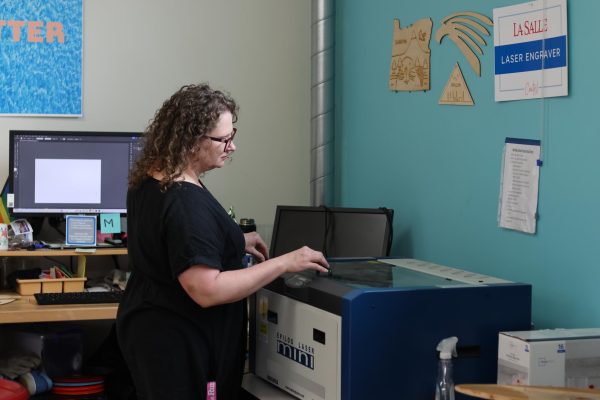
“This is a place for you to get something done, and to share a part of yourself and to be open to meeting other people,” Ms. Coleman said.
A variety of supplies for activities can be found in the Makerspace — even those that don’t seem as scientific, such as nail art or macrame. Ms. Coleman provides space for every student, and any craft type, to foster the curiosity that invites innovation and allows for relationship building. She urges everyone to visit the IDC without feeling embarrassed or worried that you don’t know anyone.
Ms. Coleman had the idea to integrate nail painting into the space because “nails may not seem like a STEM thing, but it allows someone to just be like, ‘oh, I want to do that.’” Then, once they come in and become comfortable with the space, they can notice all other supplies and develop interest in new things. “It’s like a gateway,” she said.
Ms. Coleman wants to destigmatize the idea that types of innovation are only for certain people, so she makes sure to invite everyone into the space to become interested in the equipment and feel less intimidated to ask about them
“It’s all about an invitation,” Ms. Coleman said.
Her favorite part about working in the IDC is seeing students make things for the first time, translating a not-yet-materialized idea into a program to build something physical.
“To see a student take their 3D print off for the first time and see this giddiness… It’s seriously kind of silly, but it’s just so endearing,” Ms. Coleman said.“It’s just so inspiring that they see a part of themselves, a part of their brain, like in their hands.”
In the future, Ms. Coleman hopes to expand the IDC space, especially the wood shop. She looks forward to a collaboration with Mr. Chris Long, Director of Academic Resources, and the library space so that there is a more seamless transition between the library and Makerspace.
She also hopes to create a “mobile Makerspace” that can be checked out by teachers and transported to rooms about the school, inspired by the system during the pandemic.
“To me, the Makerspace isn’t just a building, it’s a mindset,” Ms. Coleman said.
For her, it is important that the Makerspace reaches the entire school, and that it is not confined to the physical room.
Because having a strong and trusted community has had such an influence on her life, Ms. Coleman tries to facilitate the same environment for her students. She wants to instill in her students that all people are in community under God, that perseverance and development of skills are vital, and that unanswered questions can lead to positive discoveries.
From her teaching, she hopes students are reminded that answers can be found through hard work, ingenuity, exploration of different perspectives, curiosity, and collaboration.
“The world isn’t black and white. It’s like all these variations of gray, and you have to kind of be ok with a certain type of gray,” Ms. Coleman said.
She understands that success comes from building a strong self through managing your impulse, metacognition, having a sense of humor to accept mistakes, and having fun.
“I try to be the dorkiest person in the room because if I’m the dorkiest person, make fun of me, not other students, right?” she says, modeling how she wants her students to treat each other with compassion and kindness.
To make others feel comfortable, she exemplifies enjoyment and fun in the design and making process.
Ms. Coleman’s biggest inspirations to her career have been her college Biology professor Becky Houk, who always reached out to struggling students to make them comfortable, and the brothers she worked with at the University of Portland Congregation of the Holy Cross.
They were “such a good example of humility and patience,” Ms. Coleman said. “They truly believe in education and how important it is to make the world a better place, and to give people opportunities.”
She tries to bring their example into her classroom, hoping to make the difference for others that the brothers made for her.
In 2003, Ms. Coleman traveled to India with the brothers and was touched by their commitment to women, especially in helping to develop their literacy and financial literacy, allowing them to feel independent and supported.
“To know that you’re a part of something much bigger that’s making a big impact is really humbling, and it’s also inspiring at the same time,” she said.
Her time volunteering and being active in so many different communities has given her a profound love for people and a passionate effort to provide all people a group to belong to.


